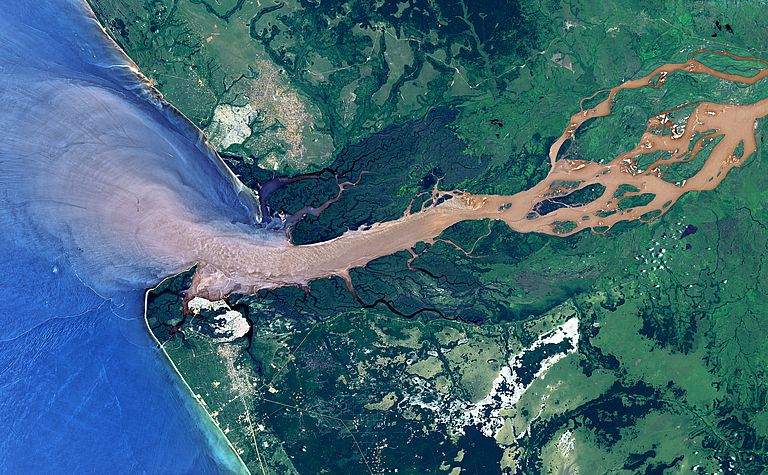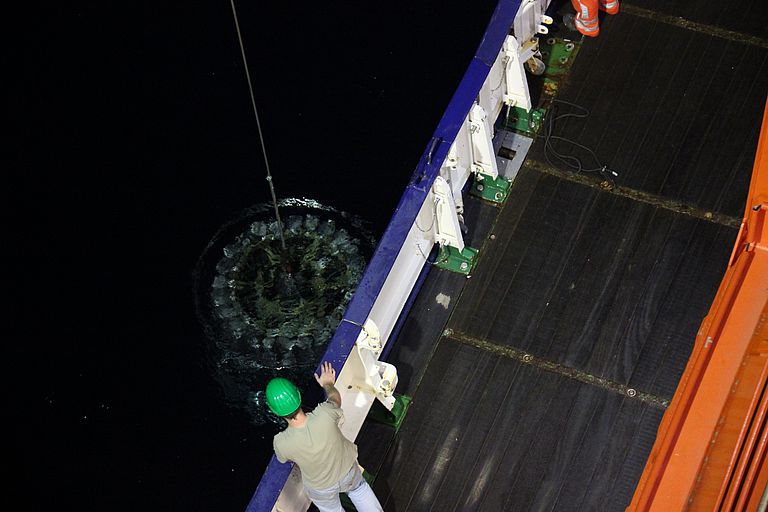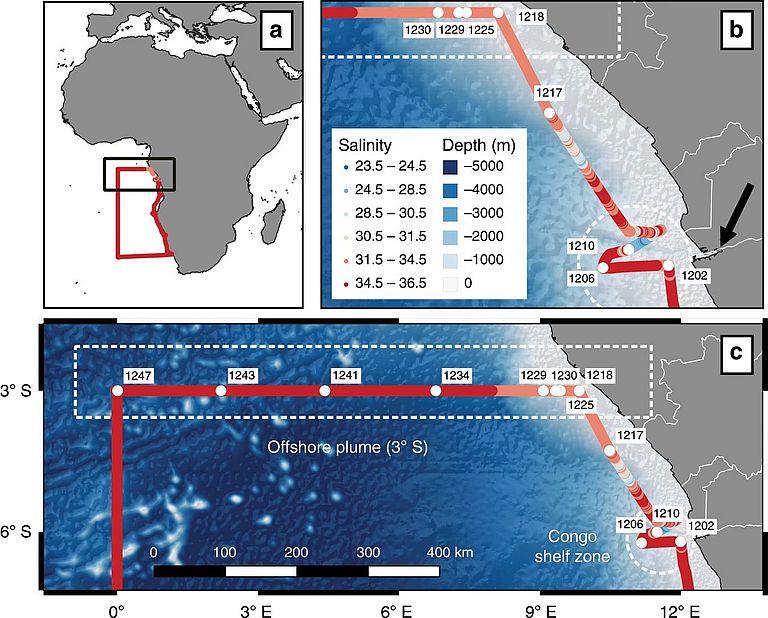The Congo is a Major Source of Iron for the Southeast Atlantic
Study shows surprisingly high fertilisation of the ocean
In terms of discharge, the Congo is the second largest river on earth. It transports large quantities of freshwater and sediments from the interior of Africa to the southeast Atlantic. Its remote location and the geopolitical tensions in southwest Africa have long prevented detailed studies on the effects of the Congo River on the ocean. During an expedition with the German research vessel METEOR in 2015, which was carried out as part of the international GEOTRACES programme, an international team of researchers led by the GEOMAR Helmholtz Centre for Ocean Research Kiel conducted the first comprehensive study on this issue.
As the team has now published in the international journal Nature Communications, the analysis of the samples and data showed that the Congo supplies the Atlantic Ocean with significantly more iron than other large rivers. "This is important for understanding many processes in the ocean. Iron is an essential element for the growth of phytoplankton. As such, it plays a crucial role in regulating productivity in the ocean and ultimately influences fish stocks and carbon uptake," says biogeochemist Prof. Dr. Eric Achterberg from GEOMAR, co-author of the study.
Rivers are generally important sources of dissolved and particulate matter in the oceans. But of the trace metals dissolved in river water, only a fraction usually reaches the open sea. In many large rivers, up to 99 percent of the metals like iron precipitate while flowing through estuaries and coastal waters.
In order to be able to follow the distribution of iron from the Congo river into the Atlantic, the team from GEOMAR and the Kiel University (CAU) used radium isotopes (228Ra and 224Ra) as markers. "This was the first time that radium isotopes were used to determine the iron fluxes from a river plume", explains PhD student Lucia Vieira, first author of the now published study.
Additional samples from the Congo estuary taken by Angolan colleagues over different seasons also helped to trace the path of the iron from the continent to the ocean. "The samples from the freshwater region of the Congo are truly unique and we are very grateful to the colleagues there, especially since sampling conditions were often difficult for them," emphasizes Prof. Dr. Eric Achterberg.
The investigations showed that dissolved iron in and downstream of the Congo estuary was only removed from the river water to a limited extent. About 500 kilometers from the mouth of the Congo, the team was able to detect iron concentrations 50 times higher than those known, for example, off the mouth of the Amazon. About 900 kilometres from the estuary, the values were still ten times higher than at a similar distance away from the Amazon estuary.
"The reason for these high iron concentrations is an additional iron input from the sediments in the coastal shelf areas, which we were able to detect with the help of Ra isotopes," explains Professor Achterberg. The fast current and the stabilisation of the dissolved iron by special molecules, so-called ligands, also contribute to the fact that the Congo transports its iron load far into the Atlantic.
The enormously large iron supply from the Congo is responsible for strong phytoplankton growth in the southeast Atlantic, which earlier studies have shown. However, iron supply is probably sensitive to climate change. The predicted changes in the hydrology of the Congo catchment area may influence the flux of iron. Changes in wind conditions and stratification of coastal waters may alter the iron supply from sediments. "These future changes have the potential to affect primary productivity and fisheries in the southeast Atlantic. But more research is needed to do this," says Professor Achterberg.
Reference:
Vieira, L. H., S. Krisch, M. J. Hopwood, A. J. Beck, J. Scholten, V. Liebetrau and E. P. Achterberg, 2020: Unprecedented Fe delivery from the Congo River margin to the South Atlantic Gyre. Nat. Commun., 11, 556, https://doi.org/10.1038/s41467-019-14255-2
High-res images:
Image of the Congo estuary taken by Landsat 9 satellite on 2 March 2015 Photo: NASA/USGS





